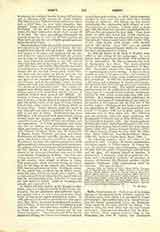

Corfu, Archdiocese of. Corfu is one of the Ionian Islands, at the entrance of the Adriatic, opposite the Albanian coast, from which it is separated by a nar-Tow channel. Its modern name is an Italian corruption for korphoi (pronounced Corfi), the Byzantine Greek name for the chief town of the island. The ancient name for both island and city was Cercyra or Corcyra. This has been identified with the Homeric Scheria, where reigned Alcinous, king of the Phaeacians, the host of Ulysses, and Nausieaa.’s father. In 735 B.C. the island received Corinthian colonists led by Chersicrates. Its navy and trade increased to such an extent that as early as 664 B.C. it could wage war upon Corinth. During the Peloponnesian War, when allied with the Athenians, Corfu fitted out 120 ships and overcame its suzerain. But internal strife soon caused the decay of its power; while the people sided with the Athenians, the aristocracy were helped by the Corinthians. From the rule of the Macedonians Corfu passed to that of the Romans. Under the Byzantines it became practically the capital of the Ionian Islands and of the neighboring cities in Epirus (Preveza, Buthrotum, etc.), and signalized itself by courageous conflicts with Dalmatians, Bulgars, and Saracens. About the end of the twelfth century it formed a duchy under the despots of Epirus. Charles of Anjou, King of Naples, conquered it in 1274. It recovered its independence by expelling the Neapolitan garrison and took refuge in the protectorate of Venice. After the capture of Constantinople, Mohammed II sent an army which laid unsuccessful siege to Corfu to punish it for having helped Buthrotum. Solyman II was equally unsuccessful, though he took away 16,000 prisoners. In 1716 Ahmed III was also driven back, the inhabitants being helped by the Saxon general Matthias Schulenburg and inspired by a monk who led the way bearing an uplifted cross. For a brief while, together with Venice (1791), Corfu came under French rule, and was then successively conquered by the Turks and the Russians (1799). The Seven Islands were united in a republic under a Turkish and Russian protectorate. The Treaty of Tilsit gave them again to the French in 1807, but in 1809 the islands, with the exception of Corfu, fell into the power of England. In 1815 the United States of the Ionian Islands were put under the protectorate of Great Britain, with Corfu as capital and residence of the governor. On March 8, 1864, the islands were annexed to Greece, and since this time Corfu (Gr. Kerkyra), with Paxos, Santa Maura (Leukas), and Ithaca, etc. have formed a nomarchy or province of the kingdom.
The island has a mild, salubrious climate. It is hilly, with rather barren valleys, and produces corn and oil. Brimstone and marble are among its exports. The whole population is about 70,000. Italian is still much used, together with Greek, chiefly among the Catholic population. The city of Corfu is situated on the eastern coast and boasts of a broad and good port. It exhibits ruins of a temple of Poseidon, a cenotaph of Menecrates, and a statue of Schulenburg. In 1861 the late Empress Elizabeth of Austria built there, in the purest Greek style, her magnificent palace, the Achilleion, named after a colossal statue of Achilles on one of the terraces of the park; this palace has been bought by the Emperor of Germany. The population of the city is about 17,000; 5000 Jews, 4000 Catholics, the rest orthodox Greeks.
According to legend the Church of Corfu was founded by St. Jason, a disciple of St. Paul, but the first known bishop is Apollodorus, present at Nicaea in 325. It was at first a suffragan of Nicopolis in Epirus Vetus, but in the Middle Ages was made a metropolis. Since 1900 it has again become a simple bishopric. (See “Echos d’Orient”, III, 285 sqq.) Among its distinguished prelates were St. Arsenius, a tenth-century author of homilies, and Georgius Bardanes, in the thirteenth century, a fiery adversary of the Latins. (See Lequien, II, 145.) The island honors as its patron the celebrated St. Spyridon, whose relics lie in the Greek cathedral. Since the thirteenth century Corfu has also been a Catholic archiepiscopal see. The archdiocese includes Paxos, Antipaxos, other islets, and several localities in Epirus, between Parga and Sasino; the Catholics, however, have almost completely disappeared except in Corfu. There is but one parish, with six churches or chapels, and some ten priests. The Sisters of Our Lady of Compassion conduct a school and an orphan-age. (For the episcopal list see Lequien, III, 877, completed by Gains, 399, and L’ubel, I, 217, II, 152.) Among the archbishops, the famous Benedictine Cardinal, Angelo Maria Quirini, who died in Italy in 1759, deserves mention.
S. PETRIDES

